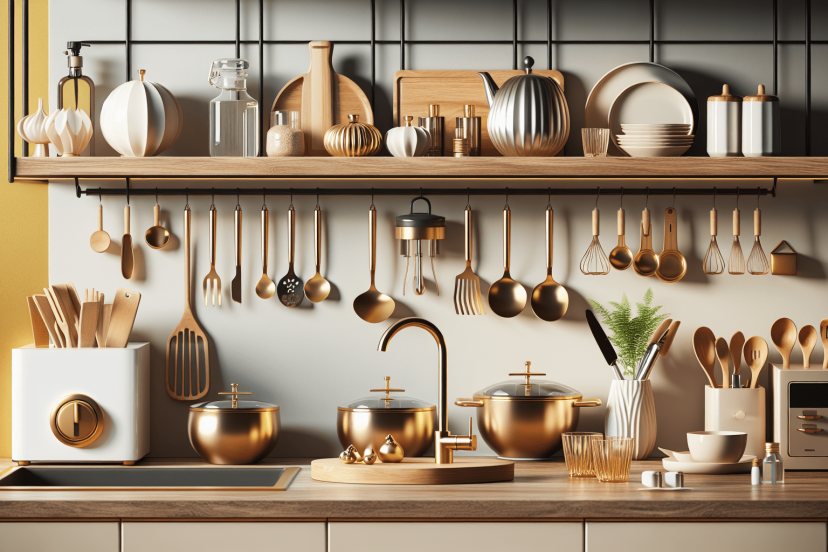What Is The Golden Rule Of Kitchen Design?
So you’ve decided to give your kitchen a makeover, but you’re not sure where to start? Look no further, because understanding the golden rule of kitchen design is the key to creating a functional and stunning space. This essential principle revolves around the concept of the kitchen triangle – the relationship between the three main work areas: the refrigerator, the sink, and the stove. By ensuring that these three elements are positioned in close proximity and form an efficient triangle, you can optimize your kitchen’s layout and make your cooking experience a breeze. Say goodbye to frustratingly long walks between appliances and embrace a kitchen design that works for you!
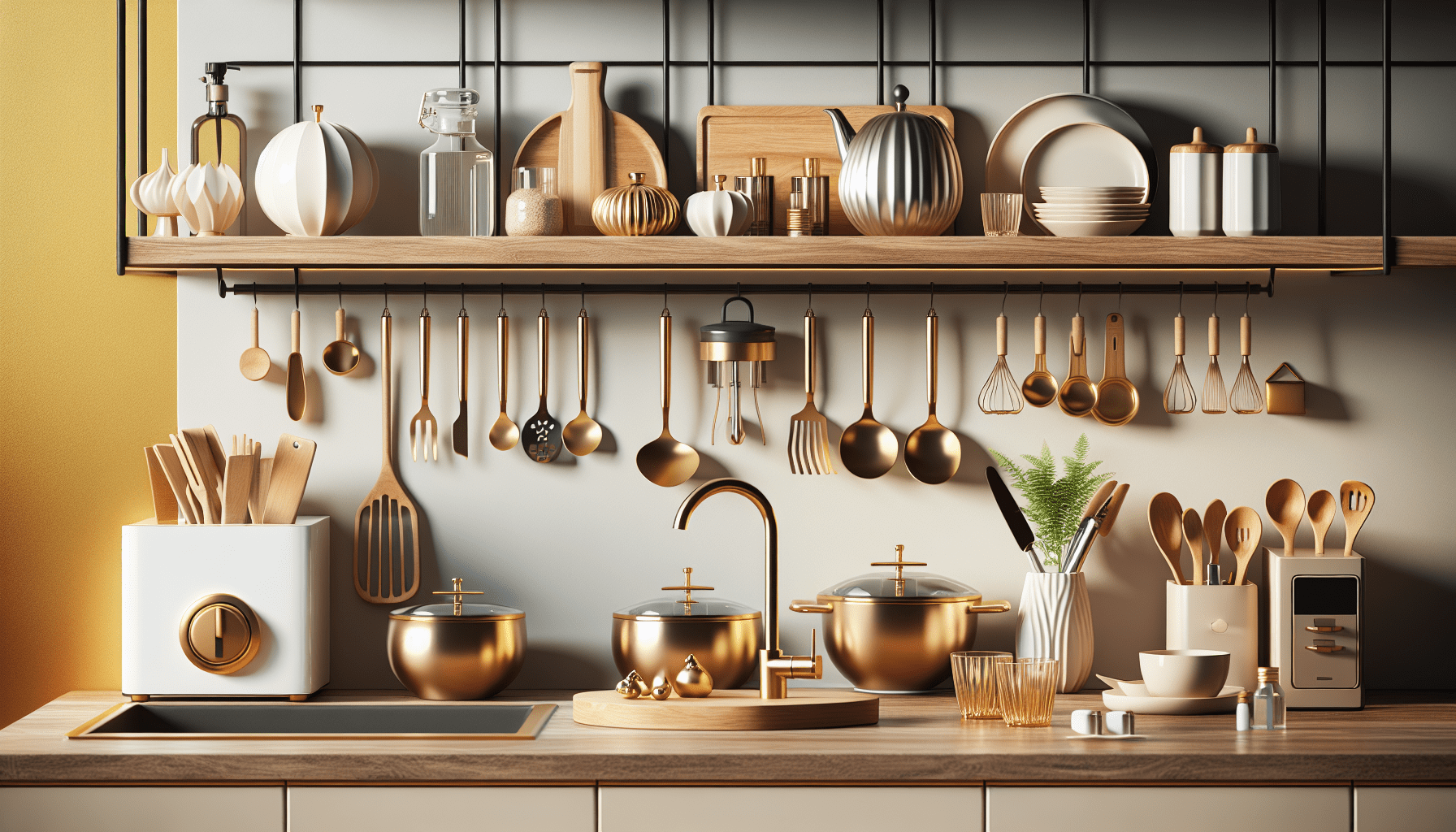
Importance of Functionality
When it comes to kitchen design, functionality is key. The layout and organization of your kitchen can significantly impact how easy it is to cook, clean, and move around in the space. One important principle to consider is the Kitchen Work Triangle, which refers to the arrangement of the three main work areas in the kitchen: the sink, stove, and refrigerator. By optimizing the placement of these elements, you can create a more efficient workflow and minimize unnecessary movement.
In addition to the work triangle, it is essential to optimize the overall space and layout of your kitchen. Think about how you use the kitchen and what tasks you frequently perform. Ensure that there is sufficient counter space for food preparation, as well as easy access to commonly used items such as pots, pans, and utensils. A well-organized kitchen will not only make cooking more enjoyable but also save you time and effort.
Lastly, don’t forget about storage. Ample storage is crucial for keeping your kitchen tidy and clutter-free. Consider incorporating various storage solutions, such as cabinets, drawers, and pantry spaces, to accommodate your needs. This will help you keep everything in its place and easily accessible, contributing to a more functional and efficient kitchen.
Efficiency in Workflow
Efficiency in workflow goes hand in hand with functionality. To design a kitchen with a logical flow, consider the sequence of tasks that you typically perform while cooking. Place the different work zones, such as food preparation, cooking, and cleaning, in a way that minimizes the distance and effort required to move between them.
Accessibility to appliances and utensils is also crucial for efficient workflow. Position your appliances, such as the oven, dishwasher, and microwave, at a comfortable height to avoid unnecessary bending or reaching. Likewise, store your frequently used utensils and tools within easy reach, whether it’s in a utensil drawer or hanging on a wall-mounted rack. By ensuring easy access to these items and appliances, you’ll be able to streamline your cooking process and work more efficiently in the kitchen.
Task lighting is another aspect to consider for efficient workflow. Proper lighting is essential for performing tasks in the kitchen, especially during food preparation and cooking. Incorporate task lighting, such as under-cabinet lights or pendant lights over the kitchen island, to illuminate specific areas where you need it the most. This not only enhances visibility but also adds a functional and aesthetic element to your kitchen.
Ergonomics and Comfort
Creating a comfortable and ergonomic kitchen design is essential for reducing strain and promoting an enjoyable cooking experience. Start by choosing the right heights and depths for your countertops, cabinets, and appliances. Generally, a standard countertop height of around 36 inches is comfortable for most people, but you can adjust it to your specific needs. Consider installing cabinets with adjustable shelves to accommodate your storage preferences, and ensure that your appliances are at a suitable height for easy use and access.
Safety and comfort should also be prioritized in your kitchen design. Install safety features such as slip-resistant flooring and rounded countertop edges to prevent accidents and injuries. In addition, consider including ergonomic features like pull-out shelves or drawers for easy access to items at the back of the cabinets. Don’t forget to provide adequate space for seating, whether it’s at a kitchen island or a separate dining area, to allow for comfortable and convenient meal preparation and dining experiences.
Aesthetics and Style
While functionality and efficiency are crucial, aesthetics and style also play a significant role in kitchen design. To achieve a cohesive and visually appealing look, choose a theme or style that reflects your personal taste and complements the overall design of your home. Whether you prefer a modern, rustic, or traditional aesthetic, make sure that the elements in your kitchen, such as cabinetry, countertops, and appliances, align with your chosen theme.
Materials and finishes greatly influence the overall aesthetic of your kitchen. Consider the durability and maintenance requirements of different materials when making your selections. For example, quartz or granite countertops offer both durability and a wide range of styles, while hardwood flooring adds warmth and character to the space. Balance the form and function of your kitchen by choosing materials that not only look good but also meet your practical needs and lifestyle.
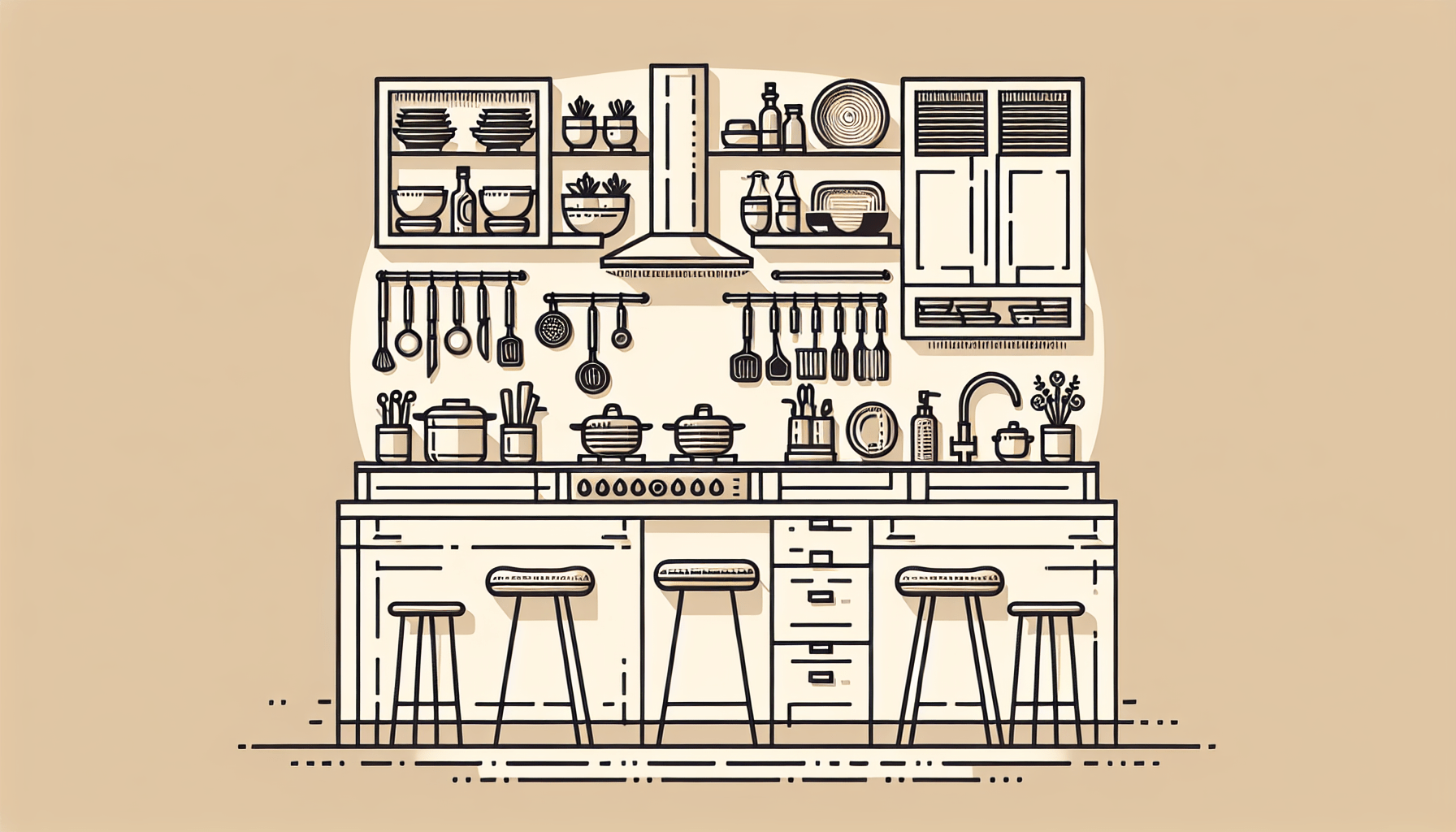
Proper Ventilation
Proper ventilation is essential in a kitchen to remove odors, heat, and airborne particles generated during cooking. Installing an adequate ventilation system, such as a range hood or an exhaust fan, is crucial to maintain a clean and healthy environment. A range hood, in particular, helps to remove cooking odors, grease, and smoke, while also preventing the buildup of moisture that can lead to mold and mildew.
In addition to a ventilation system, consider the air circulation and purification in your kitchen. Good airflow not only helps keep the space fresh but also prevents the buildup of cooking fumes. Opening windows or installing vents can greatly improve air circulation, ensuring a comfortable and pleasant cooking experience. Consider adding air purifiers or filters to further enhance the air quality in your kitchen, especially if you have allergies or respiratory sensitivities.
Proper exhaust is another aspect to pay attention to in kitchen design. Make sure that your ventilation system is properly installed and vented to the outside of your home, rather than recirculating the air back into the kitchen. This prevents the accumulation of moisture, grease, and cooking byproducts in the kitchen and helps maintain a clean and healthy living environment.
Safety and Maintenance
Safety should always be a top priority in the kitchen. Incorporate fire safety measures such as installing fire extinguishers and smoke alarms to protect yourself and your home from potential hazards. Make sure that these safety devices are easily accessible and regularly maintained. Familiarize yourself with fire safety protocols and best practices to ensure a safe cooking environment.
When it comes to maintenance, design your kitchen with easy cleaning in mind. Choose materials that are durable, stain-resistant, and easy to clean, such as stainless steel appliances, tile backsplashes, and quartz countertops. Avoid materials that may require frequent maintenance or are prone to scratches and stains. Additionally, consider the layout of your kitchen and ensure that surfaces and appliances are easily accessible for cleaning purposes.
Choosing durable and low-maintenance materials not only saves you time and effort in cleaning but also contributes to the longevity of your kitchen. By investing in quality materials and regular maintenance, you can enjoy a beautiful and functional kitchen for years to come.
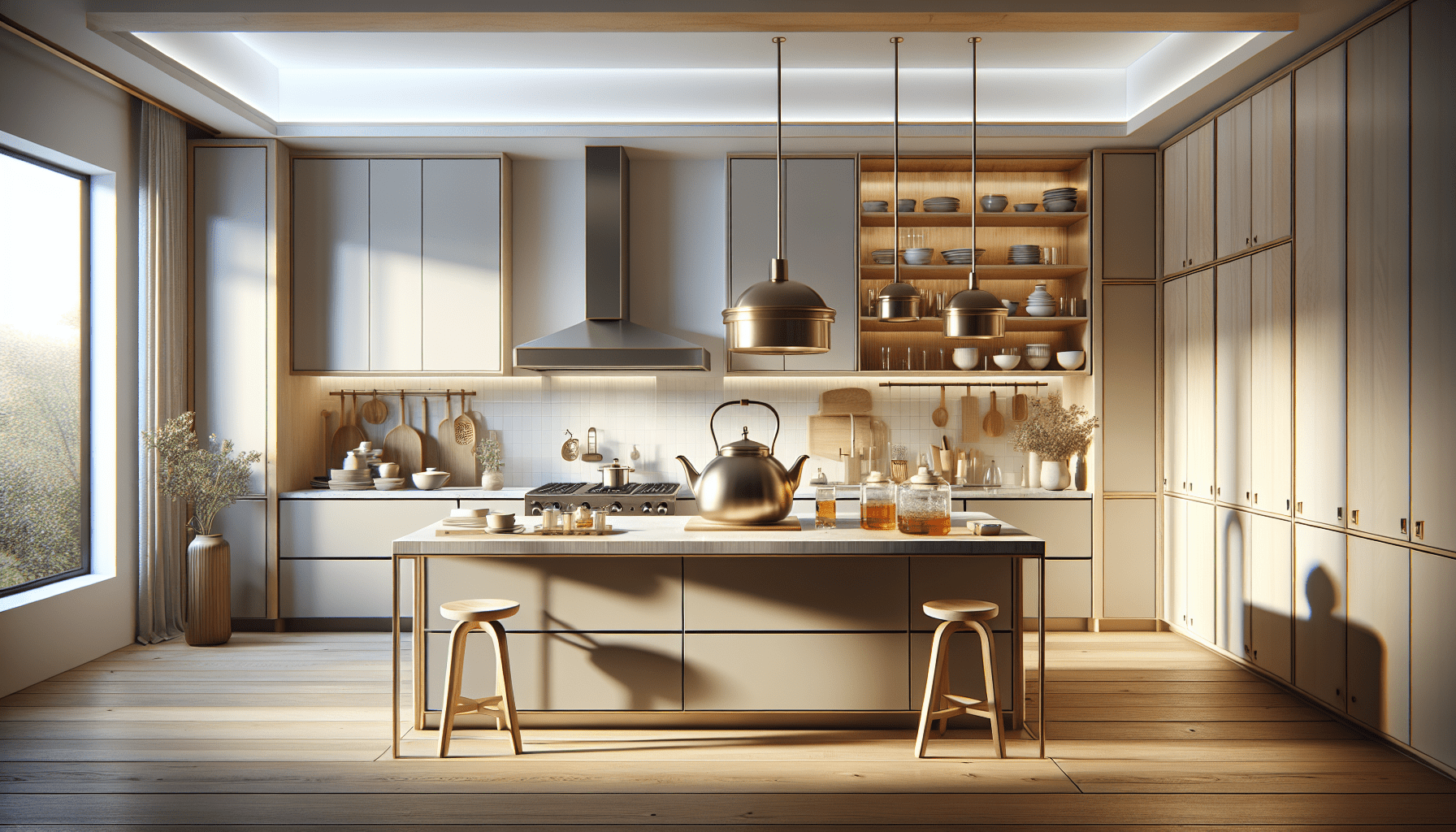
Sustainability and Energy Efficiency
With increasing concerns about environmental impact, designing an environmentally friendly and energy-efficient kitchen is becoming more important. Choose energy-efficient appliances that have high ratings and conserve water and electricity. Look for appliances with the ENERGY STAR label, as these are certified to meet strict energy efficiency standards.
Incorporate natural lighting into your kitchen design to minimize the need for artificial lighting during the day. Position windows strategically to maximize sunlight and consider installing skylights if feasible. Utilize blinds or curtains that allow for privacy without blocking natural light. Additionally, consider insulation to improve energy efficiency and reduce heating or cooling costs. Proper insulation helps to maintain a comfortable temperature in your kitchen while reducing the reliance on heating or air conditioning.
Using environmentally friendly materials is another way to enhance sustainability in your kitchen. Opt for recycled or reclaimed materials whenever possible, such as reclaimed wood for cabinetry or recycled glass for countertops. Choose paints and finishes that have low levels of volatile organic compounds (VOCs) to minimize indoor air pollution. By making conscious choices in your kitchen design, you can contribute to a greener and more sustainable future.
Consideration for Special Needs
A well-designed kitchen should be accessible to everyone, regardless of their physical abilities or age. Designing for accessibility involves creating a space that can be used comfortably and safely by individuals with disabilities or those who plan to age in place.
Consider implementing universal design principles, which focus on creating spaces that are accessible and usable by people of all ages and abilities. This includes features such as wider doorways and hallways to accommodate wheelchair users, lever-style handles that are easier to operate than traditional doorknobs, and touch or motion-sensitive faucets that minimize the need for manual dexterity.
To further accommodate disabilities or aging in place, incorporate features such as adjustable countertops and sinks, lower-height appliances, and easy-to-reach storage solutions. Install grab bars or handrails in strategic locations to assist with stability and mobility. By considering the needs of all individuals who may use the kitchen, you can create a space that is inclusive and functional for everyone.
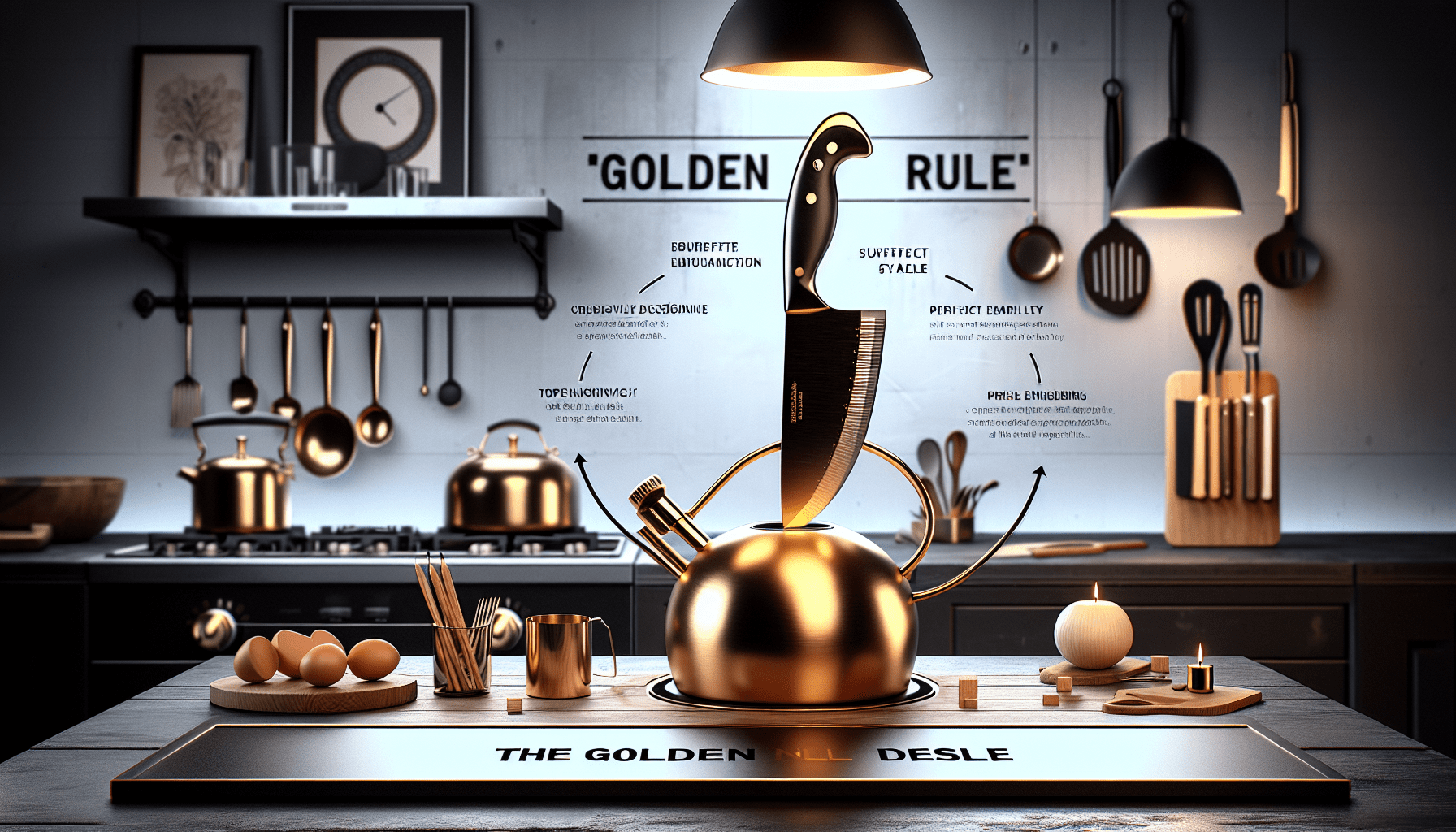
Budget and Cost-efficiency
Setting a budget for your kitchen design project is essential to ensure that you make cost-effective choices. Plan your design according to your budget and prioritize the areas that are most important to you. For example, if you enjoy cooking and entertaining, you may want to allocate more of your budget to appliances and countertop materials.
Consider cost-effective materials and features that offer good value for money. Look for deals and discounts on appliances or shop during sales to save on costs. Keep in mind that quality materials and components often come with a higher price tag but may offer better durability and longevity.
When considering your budget, also think about the long-term value and return on investment. A well-designed kitchen can increase the value of your home and potentially attract buyers if you decide to sell in the future. Take into account the resale value of your choices and prioritize features that are timeless and appeal to a wide range of potential buyers.
Personalization and Functionality
One of the best aspects of designing your own kitchen is the ability to personalize it according to your needs and preferences. Customize the design to suit your specific requirements, considering your cooking habits, lifestyle, and family size. Think about the appliances and features that are important to you and ensure they are incorporated into the design.
Don’t forget to add personal touches and preferences to make your kitchen feel like a reflection of your personality. This could include artwork, decorative items, or even a unique backsplash design. By infusing your personal style into the kitchen, you’ll create a space that is not only functional but also truly feels like home.
Lastly, consider future adaptability in your design. Life circumstances and needs may change over time, so design the kitchen with flexibility in mind. This could involve leaving space for additional appliances or planning for future renovations, such as expanding the kitchen if needed. By anticipating future changes, you can ensure that your kitchen remains functional and adaptable for years to come.

